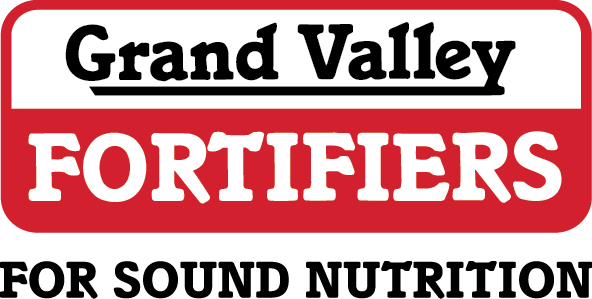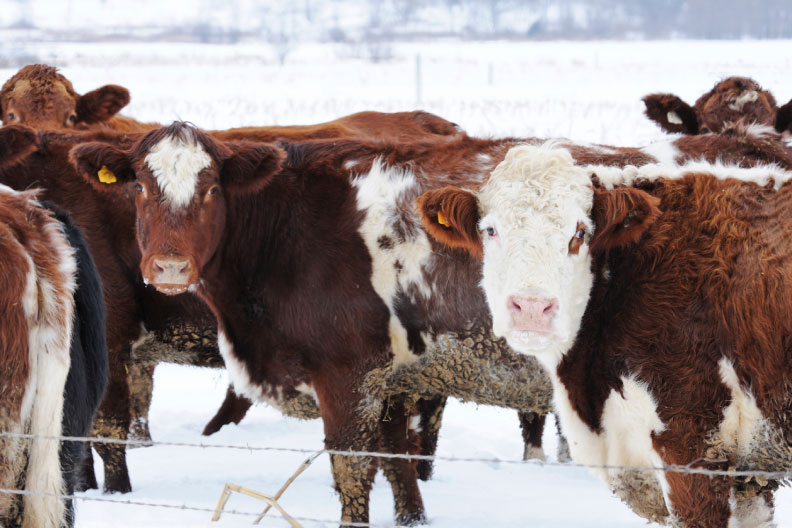By Megan Van Schaik
Beef Cattle Specialist,
Ontario Ministry of Agriculture, Food and Rural Affairs
Winter feeding costs represent the highest input cost on a cow-calf operation. These costs can be reduced by limiting the time cows are consuming stored feed. Extending the grazing season is one strategy to help stretch stored feed supplies and improve your bottom line. There are a number of factors that must be considered when deciding whether extended grazing is a suitable practice for any given operation, and this decision may vary from year to year on the same operation. Each practice has unique management considerations, but overarching considerations include water access for cows, availability of adequate fencing, whether damage to pastures can be avoided, supplementation required to meet the nutritional needs of cattle, and so on. Successful fall and winter grazing requires careful planning and monitoring. This article highlights four tips for four extended grazing options for Ontario cow-calf producers.
Stockpile Grazing
Stockpiling, also known as “deferred grazing” involves setting aside pasture in the summer months for fall or winter grazing. The pasture is left ungrazed until a killing frost, after which cattle are turned back onto the pasture and can graze until the weather conditions become unfavourable.
Time the accumulation period carefully. This is about balancing quantity and quality. If more volume is the goal, allow for a longer regrowth period but expect a mature stand. However, if animals requiring a higher plane of nutrition are being grazed, plan for growth to be less mature at frost. Keep in mind that grazing stockpiled forages after a killing frost minimizes stress on plants.
Monitor potential for pasture damage. Under wet fall conditions, pastures are more vulnerable to pugging and damage which can affect pasture performance in future years, particularly on heavy soils. If conditions are wet, avoid use of strip grazing with a back fence to reduce stocking density and trampling damage. Where practical, on-off grazing is a very effective grazing management tool under wet conditions to minimize damage. On-off grazing involves grazing animals for a short period of time (up to 3 hours) and then removing the animals to a dry lot or other type of wintering facility where they can be fed stored forage.
Access to grass under snow cover. If pastures are grazed into the winter, consider that cattle can continue to graze even with 10-15 cm of fluffy snow cover. Beyond this accumulation, access to grass becomes more challenging. Any ice cover or heavy snow will also reduce the ability of cattle to access grass.
Monitor quality throughout the extended grazing period. Nutritional value of the forage can decrease over time due to weathering losses. Test forage and supplement as required.
Cover Crop Grazing
The use of cover crops in an agricultural production system can both improve soil health and provide a feed source for cattle. Fall grazed cover crops are often planted following wheat or other small cereals harvest. There are many scenarios that can lead to successful cover crop grazing, including growing and grazing your own cover crops or partnering with a neighbouring crop farmer.
Take stock of resources required. Cover crops are often planted in fields that are not typically grazed. It is especially important in this grazing scenario to plan for appropriate fencing, water access, and cattle handling needs.
Carefully plan your cover crop mix. Formulate your cover crop mix and match species according to complimentary growing characteristics, feeding value, and antinutritional properties that may lead to health issues. A diverse mix of brassicas, small grains, legumes and cool season grasses can produce a suitable, nutritious forage for grazing cattle.
Beware of any cattle health risks. Species selection for a cover crop mix must consider any risks to cattle health and be managed accordingly. Certain species have the potential to cause health issues such as bloat, nitrate poisoning, and prussic acid poisoning. Turn cattle onto novel forage gradually in a controlled fashion to reduce risk of digestive upsets.
Graze fence-trained animals. Fence-trained cows typically make the most suitable candidates for cover crop grazing if temporary fencing is used. Trying to graze non-fenced trained stockers in this scenario, for example, may present some logistical issues and headaches.
Corn Stover Grazing
Once grain corn is harvested, a source of nutrients available to ruminants remains in the field: the stover or plant material. Corn stover grazing is another option for extended grazing for cow-calf producers in Ontario.
Understand supplementation needs. Cows grazing corn stubble will need some form of supplement on pasture. Corn stubble does not provide adequate levels of protein, vitamins, and minerals to meet nutrient requirements of cows. Work with a nutritionist to formulate a suitable supplement that can be offered on pasture to ensure optimal performance.
Use controlled grazing strategies. Controlled grazing through methods such as strip grazing can help you manage nutrient availability of the crop and intake by the cows. Uneven grazing can lead to variability in performance as cows tend to eat the grain, husks and leaves first and leave behind the less energy-dense stocks.
Look for grain hot spots. If there are spots with significant grain spillage or missed cobs, cattle can gorge on the available grain, and this can cause digestive upsets. Adjust grazing management to account for these hot spots.
Monitor body condition of cows. It is always a best practice to test and monitor a feed source offered to cattle. Weathering after harvest leads to reduced nutrient value in the stover over time. Monitor body condition of cows throughout the course of the grazing period as another check to ensure the nutritional needs of cows are being met.
Bale Grazing
Bale grazing is not a form of grazing pasture per se but involves setting hay bales out on pasture or in a hay field in the fall or winter for cattle to consume. Even distribution of bales, ideally in a diamond shape with approximately 40 feet between bales, allows for optimal grazing and reduced waste. This grazing strategy has the potential to improve fertility of a field or pasture through even distribution of manure and some loose hay.
This strategy can reduce machinery and labour requirements associated with feeding and handling manure. It must be noted that if conditions are not right, this strategy can create a lot of waste out of harvested feed leading to inefficiencies.
Account for feed waste. Although nutrients are added back to the soil through loose/waste hay, losses in dry matter must be accounted for when assessing inventories for feeding purposes. Research out of Lakeland Agricultural Research Association (LARA) has shown that dry matter losses range from 7-19% but can be greater depending on weather conditions. When deciding whether to adopt this practice, it is important to ensure that you have enough forage stored to feed through the winter considering the dry matter losses possible.
Set bales on their side. Set bales on their side, rather than on an end. This will help reduce nutrient losses through leaching.
Ensure strings are removed from bales. Twine will not break down over the winter and can be troublesome to clean up if left until the spring.
Bale graze on a firm ground. Damage to fields through machinery and cattle tramping can be avoided by setting out bales and grazing when the ground is firm.
Extended grazing practices can help reduce stored feed requirements for winter feeding and reduce overall input costs for a cow-calf operation. It is important to note that while this article provides an overview of
extended grazing options, it does not cover the full gamut of considerations. Viable options for an individual operation will be based on cattle needs, resources available, and fall conditions. Research, planning, and management is required to make extended grazing a success. n
References available upon request.
This article was written for the Fall 2019 Beef Grist. To read the whole Beef Grist, click the button below.

